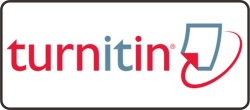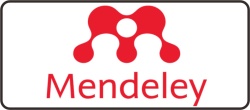GAMBARAN VASKULARISASI MATA TIKUS DIABETIK YANG DIINDUKSI ALOKSAN DAN DIBERIKAN NANOGOLD
Abstract
Diabetes Mellitus (DM) dapat menyebabkan komplikasi mikrovaskuler berupa retinopati. Prospek nanopartikel emas (nanogold) dalam mencegah komplikasi retinopati diabetikum dianggap baik karena mampu melewati penghalang darah-retina dan berasosiasi dengan sel epitel retina. Nanogold (AuNP) menekan berbagai ekspresi mediator inflamasi dan mengurangi radikal bebas yang meningkat akibat hiperglikemia. Berbagai studi membuktikan AuNP memiliki daya inhibisi terhadap TGF ß, VEGF, antiglikasi, dan antioksidan Penelitian ini menggunakan hewan coba tikus putih jantan (Rattus norvegicus) sebanyak 25 ekor yang dipisahkan secara acak menjadi lima kelompok, diinduksi oleh aloksan dan diberikan AuNP, inulin, dan keduanya untuk melihat gambaran vaskularisasi mata. Hasil pengukuran menggunakan uji Kruskall Wallis dan Uji ANOVA menunjukkan perbedaan kadar gula darah sewaktu antar kelompok tidak signifikan. Sementara, analisis gambaran vaskularisasi menggunakan uji pearson chi square menghasilkan pemberian kombinasi inulin dan nanogold dapat mencegah terjadinya vasodilatasi (Nilai p = 0,001) dan edema makula (Nilai p = 0,001). Namun tidak terdapat perbedaan proporsi yang signifikan pada kejadian perdarahan retina (Nilai p = 0,308). Stres oksidatif mendukung patogenesis komplikasi diabetik. Kombinasi inulin dan nanogold secara bersamaan memberikan efek yang tidak efektif terhadap menurunkan gula darah. Meskipun tidak dapat disimpulkan kemungkinan adanya interaksi antara inulin dan AuNP memberikan efek inhibisi terhadap kadar gula darah, kombinasi nanogold dan inulin memberikan efek protektif yang paling baik terhadap endotel retina mata karena dapat mencegah vasodilatasi, edema makula, dan perdarahan.
Kata kunci: aloksan, diabetik, nanogold, vaskularisasi
DOI : 10.35990/mk.v8n0.p1-12
References
2. Elbehiry A, Edrees HM, Elmosaad YM. Hypoglycemic and Anti-Inflammatory Effect of Gold Nanoparticles in Streptozotocin-Induced Type 1 Diabetes in Experimental Rats. Int J Diabetes Res [Internet]. 2017;2017(1):16–23. Available from: https://www.researchgate.net/publication/317175618
3. Yaribeygi H, Atkin SL, Sahebkar A. A review of the molecular mechanisms of hyperglycemia‐induced free radical generation leading to oxidative stress. J Cell Physiol. 2019 Feb 26;234(2):1300–12.
4. Fandinata SS, Darmawan R, Surabaya AF. Pengaruh Kepatuhan Minum Obat Oral Anti Diabetik Terhadap Kadar Gula Darah Pada Pasien Diabetes Mellitus Tipe II [Internet]. Vol. 10, Jurnal Bidang Ilmu Kesehatan. 2020. Available from: http://ejournal.urindo.ac.id/index.php/kesehatan
5. BarathManiKanth S, Kalishwaralal K, Sriram M, Pandian SBRK, Youn H seop, Eom SH, et al. Anti-oxidant effect of gold nanoparticles restrains hyperglycemic conditions in diabetic mice. J Nanobiotechnology. 2010 Jul 14;8.
6. Alomari G, Hamdan S, Al-Trad B. Gold nanoparticles as a promising treatment for diabetes and its complications: Current and future potentials. Brazilian Journal of Pharmaceutical Sciences. 2021;57.
7. Yaribeygi H, Atkin SL, Sahebkar A. A review of the molecular mechanisms of hyperglycemia‐induced free radical generation leading to oxidative stress. J Cell Physiol. 2019 Feb 26;234(2):1300–12.
8. Jo DH, Hong JW, Kim JH, Han SW, Kim JH. Gold Nanocrystals with Well-Defined Crystallographic {111} Facets Suppress Pathological Neovascularization. J Biomed Nanotechnol. 2016 Jul 1;12(7):1520–6.
9. Darweesh RS, Ayoub NM, Nazzal S. Gold nanoparticles and angiogenesis: Molecular mechanisms and biomedical applications. Vol. 14, International Journal of Nanomedicine. Dove Medical Press Ltd.; 2019. p. 7643–63.
10. Yanti EF, Taufikurohmah DT. Synthesis and Characterization of Nanogold Using Matrix Cetostearyl Alcohol as Free Radicals Scavenging in Cosmetic. Vol. 2, UNESA Journal of Chemistry. 2013.
11. Ayu Ningtias S, Taufikurohmah T, Studi Kimia P, Matematika dan Ilmu Pengetahuan Alam F, Negeri Surabaya U, Ketintang J. Pengaruh Pemberian Nanogold-Nanosilver untuk Peningkatan Imun Masyarakat Terdampak Covid-19 Kluster Sidoarjo. Care:Jurnal Ilmiah Ilmu Kesehatan. 2021;9(3):390.
12. Leary SL, American Veterinary Medical Association. AVMA guidelines for the euthanasia of animals : 2013 edition. 102 p.
13. Hawk CTerrance, Leary SL, Morris TH, American College of Laboratory Animal Medicine., European College of Laboratory Animal Medicine. Formulary for laboratory animals. Blackwell Pub; 2005. 203 p.
14. Alomari G, Hamdan S, Al-Trad B. Gold nanoparticles as a promising treatment for diabetes and its complications: Current and future potentials. Brazilian Journal of Pharmaceutical Sciences. 2021;57.
15. Sengani M, V DR. Identification of potential antioxidant indices by biogenic gold nanoparticles in hyperglycemic Wistar rats. Environ Toxicol Pharmacol. 2017 Mar;50:11–9.
16. Rao M, Gao C, Xu L, Jiang L, Zhu J, Chen G, et al. Effect of Inulin-Type Carbohydrates on Insulin Resistance in Patients with Type 2 Diabetes and Obesity: A Systematic Review and Meta-Analysis. J Diabetes Res. 2019 Aug 27;2019:1–13.
17. Liu F, Prabhakar M, Ju J, Long H, Zhou HW. Effect of inulin-type fructans on blood lipid profile and glucose level: a systematic review and meta-analysis of randomized controlled trials. Eur J Clin Nutr. 2017 Jan 14;71(1):9–20.
18. Falagan-Lotsch P, Grzincic EM, Murphy CJ. One low-dose exposure of gold nanoparticles induces long-term changes in human cells. Proceedings of the National Academy of Sciences. 2016 Nov 22;113(47):13318–23.
19. Fratoddi I, Venditti I, Cametti C, Russo MV. How toxic are gold nanoparticles? The state-of-the-art. Nano Res. 2015 Jun 9;8(6):1771–99.
20. Darweesh RS, Ayoub NM, Nazzal S. Gold nanoparticles and angiogenesis: Molecular mechanisms and biomedical applications. Vol. 14, International Journal of Nanomedicine. Dove Medical Press Ltd.; 2019. p. 7643–63.
21. Stitt AW, Curtis TM, Chen M, Medina RJ, McKay GJ, Jenkins A, et al. The progress in understanding and treatment of diabetic retinopathy. Prog Retin Eye Res. 2016 Mar;51:156–86.
22. Wang W, Lo A. Diabetic Retinopathy: Pathophysiology and Treatments. Int J Mol Sci. 2018 Jun 20;19(6):1816.
23. Soliman MKY, Abu-Elghait M, Salem SS, Azab MS. Multifunctional properties of silver and gold nanoparticles synthesis by Fusarium pseudonygamai. Biomass Convers Biorefin. 2022;
24. Licciardi M, Li Volsi A, Mauro N, Scialabba C, Cavallaro G, Giammona G. Preparation and Characterization of Inulin Coated Gold Nanoparticles for Selective Delivery of Doxorubicin to Breast Cancer Cells. J Nanomater. 2016;2016:1–12.
25. Li Volsi A, Jimenez de Aberasturi D, Henriksen-Lacey M, Giammona G, Licciardi M, Liz-Marzán LM. Inulin coated plasmonic gold nanoparticles as a tumor-selective tool for cancer therapy. J Mater Chem B. 2016;4(6):1150–5.
26. Zhao S, Wang D, Zhou Q, Wang B, Tong Z, Tian H, et al. Nanozyme-based inulin@nanogold for adhesive and antibacterial agent with enhanced biosafety. Int J Biol Macromol. 2024 Mar;262:129207.
27. Chen H, Dorrigan A, Saad S, Hare DJ, Cortie MB, Valenzuela SM. In Vivo Study of Spherical Gold Nanoparticles: Inflammatory Effects and Distribution in Mice. PLoS One. 2013 Feb 28;8(2):e58208.
28. Wu L. Classification of diabetic retinopathy and diabetic macular edema. World J Diabetes. 2013;4(6):290.
29. Esmiralda N, Edward Z, Luckianto Chayadi M. Hubungan Lamanya Menderita Diabetes Melitus dengan Derajar Retinopati Diabetik di Poli Mata RS Budi Kemuliaan Kota Batam Tahun 2020-2022. 2023 Jan;



























